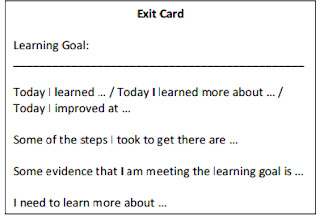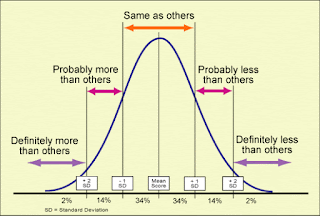As a future teacher I am constantly thinking about
the best ways to structure my curriculum to provide the best opportunities for
my students. Interdisciplinary curriculum is becoming more and more relevant in
the 21st century learning styles and is a style of teaching that I
find very interesting. Interdisciplinary curriculum integrates concepts from
different disciplines to make a synthesized whole in which many areas of study
are considered (Drake, Reid, & Kolohon, 2014). There are several ways to do
this but one of the best ways is through transdisciplinary curriculum. Transdisciplinary
curriculum means going beyond the curriculum and planning with student interests
and real world contexts rather than curriculum outcomes (Drake et al., 2014). Once
a relevant theme is established teacher and students work together to decide
what curriculum expectations fit their theme best. Since it is a real world
context, many subjects are easily incorporated because a variety of ideas and
skills are being implemented (Drake et al., 2014). Transdisciplinary curriculums
include topics such as world hunger, gender inequality, and many other global
issues. For example a question that could guide a transdisciplinary curriculum
could be “why do some people in our community not have enough food? How can we
change this?”. I wish that I had received this kind of education when I was in
school. I feel like many teachers use the curriculum as the almighty guide for
lessons and student expectations when sometimes the material is not relevant to
the student’s lives. When teachers ask students questions like “what concerns
you about yourself and the world around you?” they will be surprised by the immense
awareness and knowledge students have about the world. Children are not little
machines that you deposit information into. They think, have ideas and most of
all care about the world around them and are interested in making change.
For Transdisciplinary curriculum a big idea acts as the overarching theme that leads the inquiry process
Retrieved from http://www.greenwichschools.org/page.cfm?p=6697
To
keep things in line with curriculum development, transdisciplinary curriculums
have a very distinct set of know, do and be expectations. Learning to know
involves making connections, adapting to changes and knowing how to learn new
material. Learning to do involves performance tasks that demonstrate the
ability to apply knowledge in a creative manner (Transdisciplinary Learning,
2006). Finally learning to be involves making connections on a local and global
scale as well as being on a life-long journey of self-discovery
(Transdisciplinary Learning, 2006). I thought I should include this information
because it exhibits how possible a transdisciplinary curriculum is to implement.
It seems a major risk to leave students to decide what the unit of study should
be but through this KDB it is clear this curriculum is designed to implement
many valuable skills that can used in the future.
A
great way implement a transdisciplinary curriculum is through project-based
learning. In this, students tackle a local problem in the community with the guidance
of their teachers (Drake & Burns, 2004). Teachers and students select a
topic of study based on student interests, curriculum and local resources as a
first step. Then the teacher works with the students to determine what they
already know about the problem and help them generate questions and resources
to tackle the problem. Finally, students share their work in a culminating activity
where they share their results with the class and discuss strategies (Drake
& Burns, 2004). Project-based learning has been proven to be extremely
effective in that students are more attentive, ask open ended questions, make
connections between curriculum and real-world events, and are generally more
excited about school and the material that is being covered. I think in my
future classroom I will have project-based learning activities in my classroom
as it will help me have a transdisciplinary classroom. Using project based
learning to help them environment would be useful in the Canadian context. Canada
is known for its environmental beauty but pollution is slowly destroying it. As
a project-based learning activity students could visit a local pond, forest,
lake etc. and determine how they could use local resource to clean it up.
Students would be making connections with the community and the real world
through this form of curriculum which is knowledge that they will hold onto for
a life time. I hope that this is a form of learning that other educators will
use in the future because it’s really valuable J
Retrieved from: https://www.youtube.com/watch?v=ARXs2cpzY3c
If you want to see a good example of transdisciplinary curriculum watch this video! It's really cool to see all these ideas come together in a real classroom!
References
Transdisciplinary Learning. (2006). Retrieved November
4, 2015 from: http://www.greenwichschools.org/page.cfm?p=6697
Drake, S., & Burs, R. (2004). What is Integrated
Curriculum? In Meeting standards through
integrated curriculum. Alexandria, Va.: Association for Supervision and
Curriculum Development.
Drake,
S. M., Reid, J. L., & Kolohon, W. (2014). Interweaving Curriculum and Classroom Assessment: Engaging the 21st
Century Learner. Don Mills, ON: Oxford University Press.





